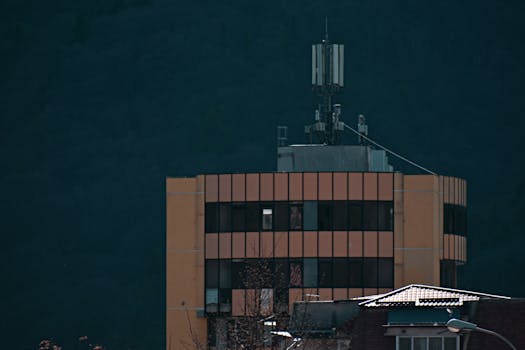
The Rise of Mega-Constellations: Latest Updates in Satellite Telecommunications
Mega-Constellations Satellite Telecommunications has been a rapidly growing field in recent years, with numerous companies and organizations launching large constellations of satellites into low Earth orbit. These mega-constellations are designed to provide global coverage and high-speed internet connectivity, and are expected to revolutionize the way we communicate and access information.
The concept of mega-constellations is not new, but recent advancements in technology and reductions in launch costs have made it possible for companies to launch hundreds or even thousands of satellites into orbit. One of the key drivers of this trend is the growing demand for high-speed internet connectivity, particularly in areas where traditional fiber optic cables are not available.
Key Players in the Mega-Constellations Market
Several companies are currently leading the charge in the mega-constellations market, including SpaceX, Amazon, and OneWeb. SpaceX, founded by Elon Musk, has launched several batches of its Starlink satellites, with plans to launch thousands more in the coming years. Amazon, through its Kuiper Systems subsidiary, is also planning to launch a constellation of over 3,000 satellites. OneWeb, meanwhile, has launched several batches of its own satellites and plans to provide global coverage by 2025.
These companies are not only launching satellites, but also developing new technologies to support their constellations. For example, SpaceX is developing a new type of satellite dish that can be used to connect to its Starlink satellites, while Amazon is working on a new type of antenna that can be used to communicate with its Kuiper Systems satellites.
Benefits and Challenges of Mega-Constellations
The benefits of mega-constellations are numerous. They have the potential to provide high-speed internet connectivity to remote and underserved areas, bridging the digital divide and enabling new opportunities for economic development. They can also provide backup connectivity in areas where traditional infrastructure is damaged or destroyed, such as during natural disasters.
However, there are also several challenges associated with mega-constellations. One of the main concerns is the potential for space debris, as the large number of satellites in orbit increases the risk of collisions and other accidents. There are also concerns about the impact of mega-constellations on the environment, particularly in terms of the amount of energy required to launch and operate the satellites.
Regulatory Framework and International Cooperation
The regulatory framework for mega-constellations is still evolving, and there are several international organizations and agreements that are working to establish guidelines and standards for the industry. The International Telecommunication Union (ITU), for example, is responsible for coordinating the use of radio frequency spectrum and orbit resources, while the United Nations Committee on the Peaceful Uses of Outer Space (COPUOS) is working to develop international guidelines for the long-term sustainability of outer space activities.
International cooperation is also critical for the success of mega-constellations, as the global nature of the technology requires coordination and collaboration between countries and organizations. The ITU, for example, has established a number of international agreements and regulations that govern the use of satellite telecommunications, including the ITU Radio Regulations and the Convention on International Telecommunications.
In conclusion, the rise of mega-constellations is a rapidly evolving trend in the satellite telecommunications industry, with numerous companies and organizations launching large constellations of satellites into low Earth orbit. While there are several benefits to this technology, including the potential to provide high-speed internet connectivity to remote and underserved areas, there are also several challenges that must be addressed, including the potential for space debris and the impact on the environment. As the industry continues to evolve, it is likely that we will see new technologies and innovations emerge that will help to address these challenges and unlock the full potential of mega-constellations.




